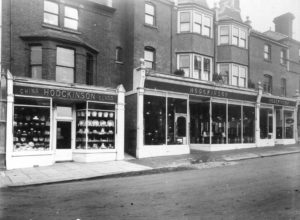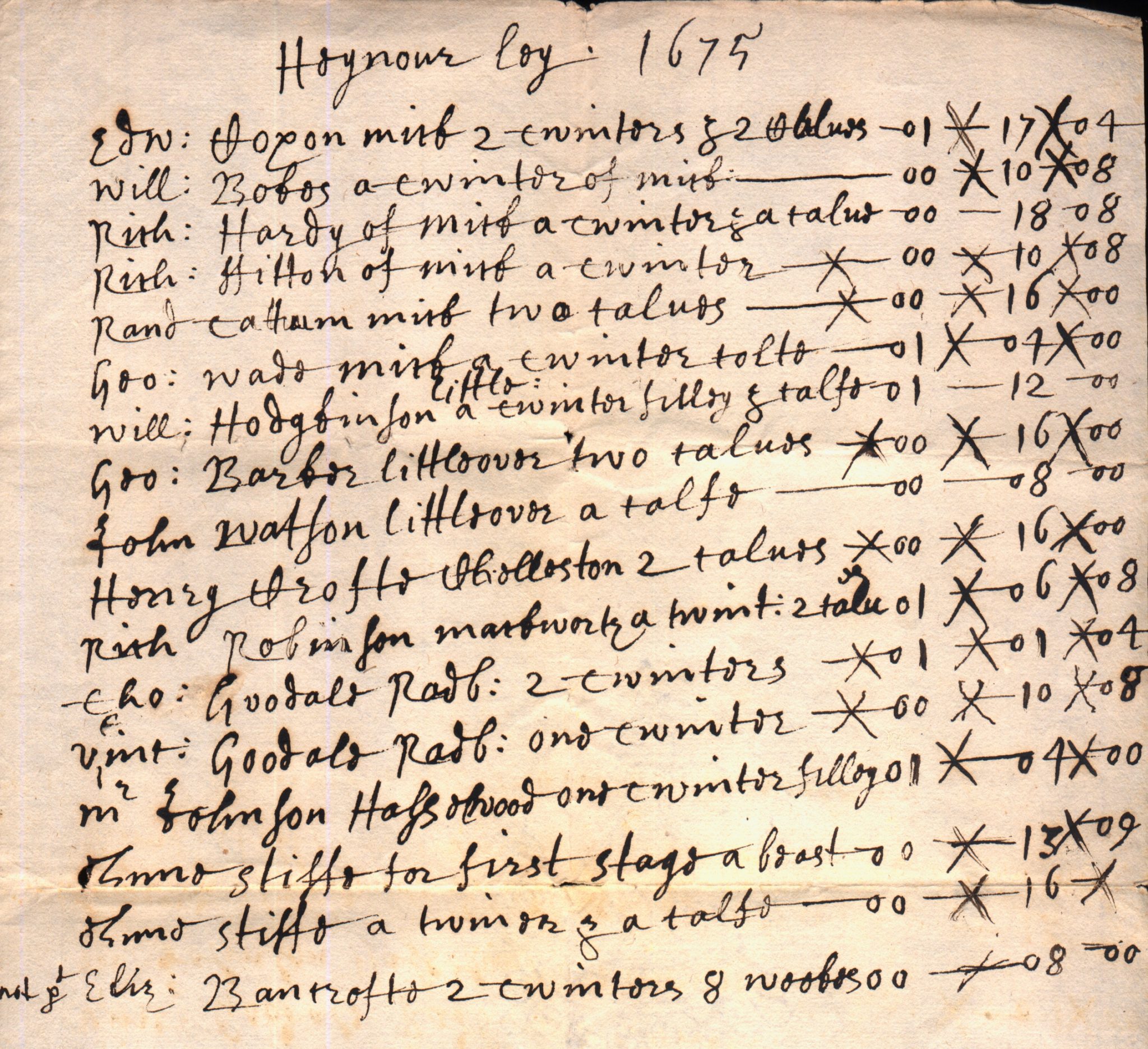
The Hodgkinsons were a Derbyshire farming family and the furthest back I have been able to trace them was in Littleover, south-west of Derby, in the late-17th century. The earliest ancestor I have found was William Hodgkinson who was recorded there in 1675 when he was selling three of his livestock, a twinter (a two-year-old beast), a filly and a calf. Many years ago I was given this original page where he and the other husbandmen and woman are listed. He is mentioned again in the Derby Fair Book in the same period when he exchanged ‘one bay nagge with a starr and a snipp and 2 white feete’ with a foal and a nag belonging to another farmer.
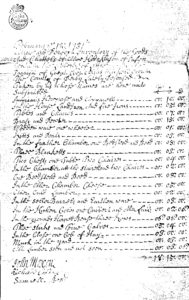
William’s younger son Richard farmed at Huffin Heath in Littleover and married Alice Payne at Mackworth, the next village, in 1686. Over the next 16 years she bore him seven children, four boys and three girls. Widowed when her youngest, my ancestor James, was only two, she lived on for a further 25 years, long enough to see three of her children, Mary, Alice and John, marry and give her grandchildren. When Alice died early in 1732 she had made her will four years before, though she had only been able to sign it with her mark, a letter A. The inventory of her possessions revealed that her house had five rooms on two floors: three chambers as well as a kitchen and cellar. There was brassware and pewter, tables and chairs. Also it was a working farm with a few animals, a haystack and ‘muck in the yard’, all of a total value assessed at £18 15 shillings.
James Hodgkinson, who had been born in 1702, lived on at Huffin Heath Farm after his mother’s death. In September of 1733 he married Mary Webster at Duffield, eight miles away to the north of Derby. Again, I am descended from the youngest of their sons, and ninth of their ten children, Richard, who was born in 1750. When his father died he left the farm to his wife Mary for her lifetime, and then to be equally divided between the children who survived her. In fact Mary Hodgkinson lived to a great age, passing away in her 94th year, and it was Richard who carried on farming at Huffin Heath. In May 1781 he had married a local girl, Elizabeth Wade, who was already pregnant with their first child, Sarah, born two months later. My great-great-grandfather, John, was born the following year although, inexplicably, there is no entry for his baptism in the register at Littleover. Elizabeth went on to have another son and daughter, Thomas and Millicent, before she died aged only 33. A busy farmer, Richard was then widowed with four children under the age of 10. The next four years must have been difficult but he married again, this time to Elizabeth Knight, from Derby, who was 22 years old; Richard was 42. There was life in the old dog yet, as the saying goes, for there would be a dozen offspring from Richard’s second marriage. He outlived his second wife (who was probably worn out by having children), but this time there would have been enough older sisters and brothers to take care of the youngest children who had already reached their teens.
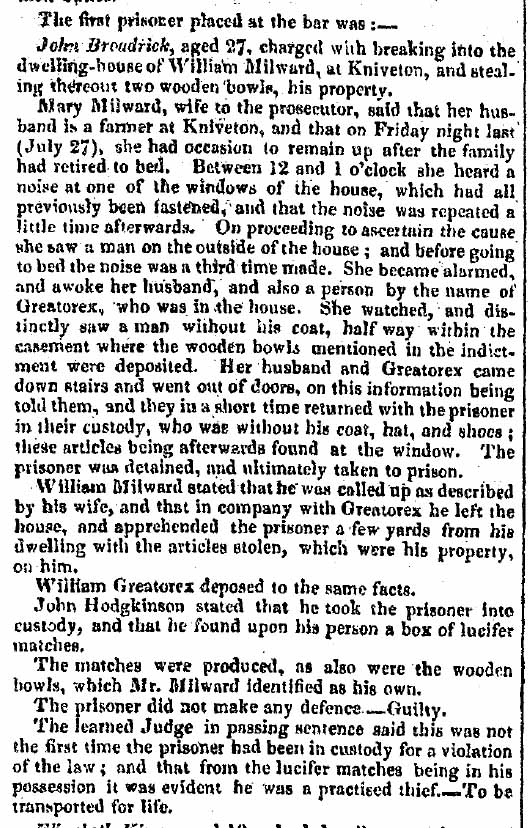
John Hodgkinson married Mary Spencer from Mickleover in 1807 and they lived at Littleover for about 15 years with their growing family. The oldest, named after his father, arrived in 1809, and two more sons and three daughters were born at more or less regular intervals thereafter. My great-grandfather, Richard, was the last to be born before the family moved to Kniveton, 15 miles away, where John had taken a lease of Church Farm. There, another son and daughter were born. Many years ago, my father’s cousin Ethel, John’s great-granddaughter, gave me these handcuffs, which she said had belonged to him. She said that, as well as being a farmer he had been the parish constable and that he had been involved in the apprehension of a burglar at the Green Man Inn in Ashbourne. Searching through old newspapers I found this account in the Derby Mercury of 1 August 1838 which partially corroborates the story.
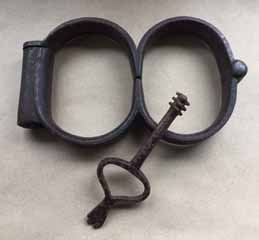
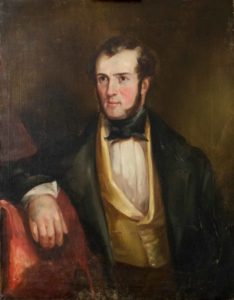
While most of John and Mary’s children either married farmers or became farmers, John, the eldest, became a teacher. He must have spent some time in Manchester for it was there that he had his portrait painted in about 1838, just before he returned to Kniveton to marry Mary Hurd. We lose track of them for the next 13 years until they are both recorded teaching at a school in Langham, Rutland. Ten years later they had returned to teach at Kniveton. Later John gave up teaching and became a land agent. He died at Ilkeston in 1893, and Mary two years later. His sisters, Ann, Mary and Elizabeth, all married local farmers and with the exception of Paul, the youngest, his brothers became farmers. Paul was a miller in Ilkeston. There was a fourth sister, Sarah, who died when she was but 12 years old, and is buried next to the grave of her parents, adjacent to the rear of Church Farm, in Kniveton churchyard. The third boy in the family, my great-grandfather Richard, was born in Littleover in 1821 and it was he who carried on the tenancy at Church Farm after his father died. He married a local girl, Ann Tomlinson, from the neighbouring village of Atlow in 1856 and they had five children, the oldest being Ethel’s mother, Mary, and the youngest was my grandfather Paul who was born in 1866.
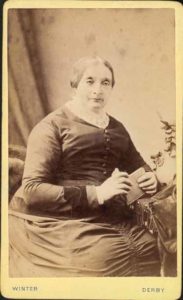
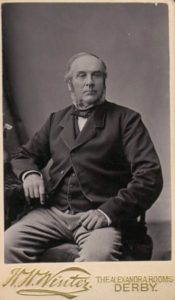
In 1867 the family moved to Shottle, near Belper, where Richard took on the tenancy of two farms, White House and Holly Seat, both of which were part of the extensive estates of the Duke of Devonshire. Richard built the house at Holly Seat. Located on the top of a hill, it commands a fine view across the Derbyshire countryside. After their father died my grandfather’s two oldest brothers, John and Richard, took on the two farms while the other brother, Thomas, became a pharmaceutical chemist.
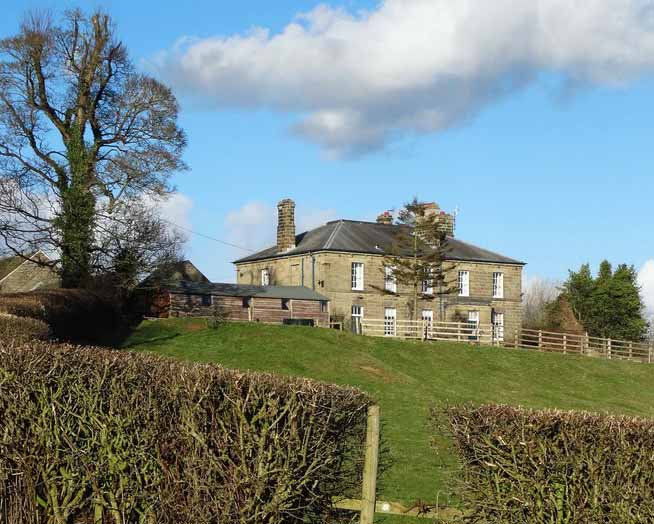
Choosing a different path, after attending the Collegiate School in Belper, my grandfather Paul was apprenticed, aged 16, to an ironmonger, Mr George Saul, in Lymington, Hampshire. Completing his four years apprenticeship, Paul found employment in Maidstone, Kent. In 1896, he moved to Bexhill, in Sussex, and was in a position to purchase the ironmongery business of Mr William Graveney. Bexhill had been an inland village at the beginning of the nineteenth century, notable only for barracks housing the King’s German Legion, stationed in the event of a Napoleonic invasion. However, the building of the railway line from Lewes to Hastings in 1846 and the inheritance, through marriage of the Manor of Bexhill by the Earl de la Warr led to the development of the town as a seaside resort by successive earls. By the 1890s the building of houses and shops had been proceeding apace and there were opportunities for a variety of businesses to thrive. In September 1900 Paul married my grandmother, Jessie Tavener at St Peter’s church.
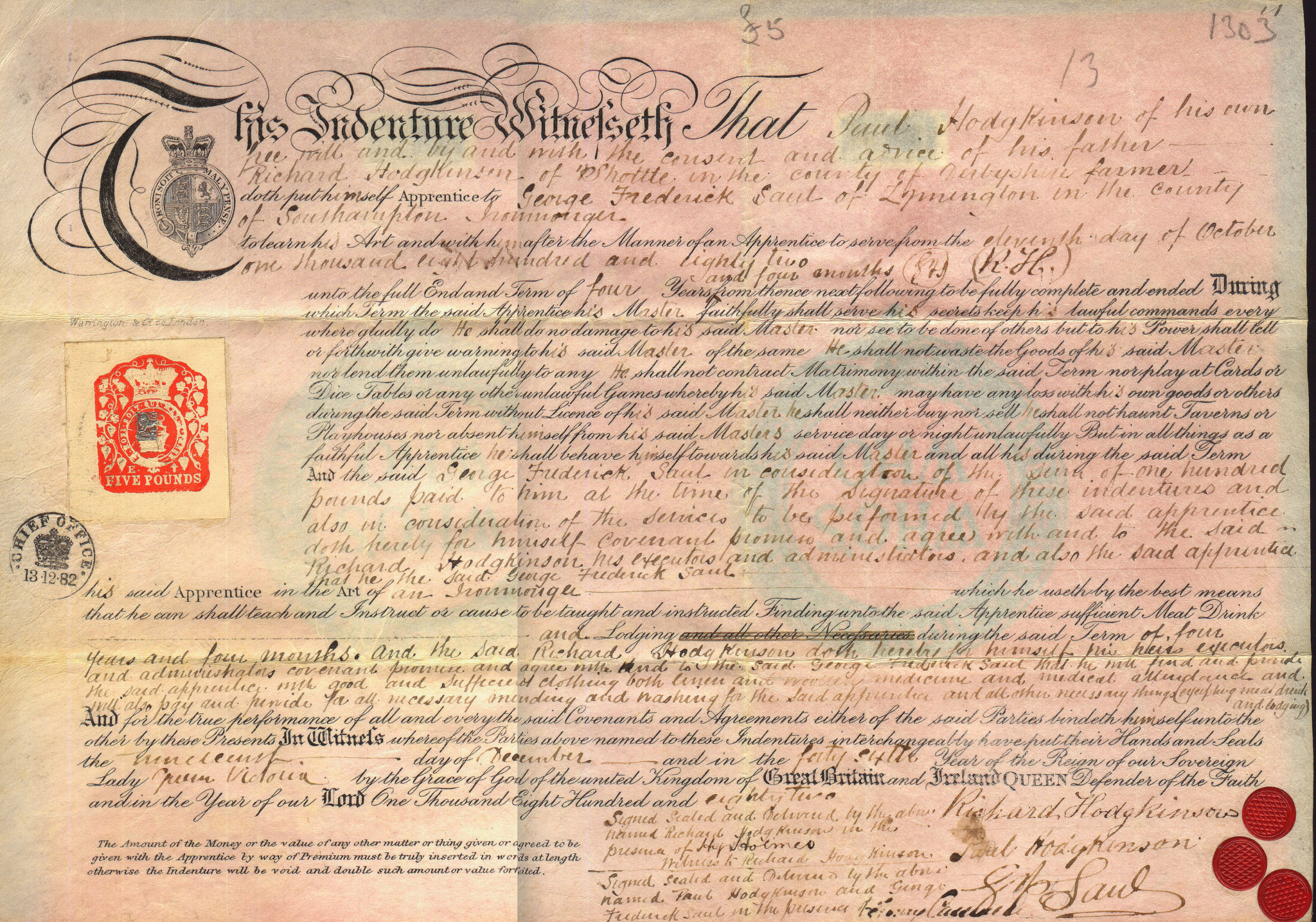
They lived in the flat above the shop in Devonshire Square, which was where their third child, my father Paul Allan, was born five years later. Eventually there would be five children – Muriel, Jack, Allan, Mildred and Spencer – and the business was doing well enough for the family to move to a detached house at 2 Clifford Road. The business was soon expanded to include furniture, china and glassware in premises round the corner at the top end of Western Road.
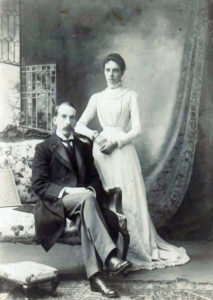
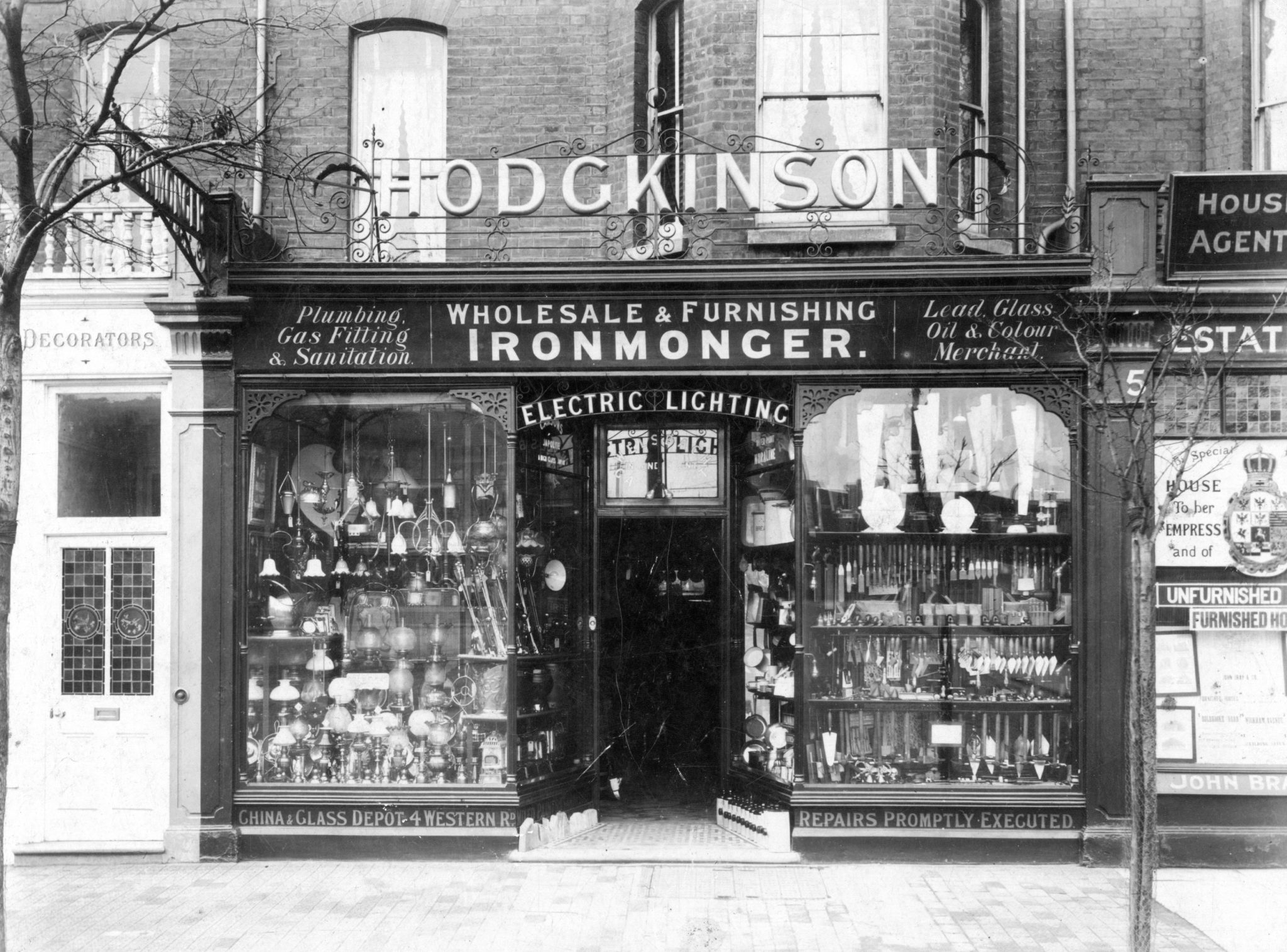
Paul Hodgkinson died in 1942 having already handed over management of the ironmonger’s to his eldest son Jack. The ironmongery was sold in the 1960s. The furniture business had closed for the war. Both Allan and Spencer had worked in furniture retailing between the wars so in 1946, after they had both been demobilised from the RAF, they made the decision to take on the furniture shop together which, under the name of P. Hodgkinson Ltd, grew under their management and continued to trade until 1971.
